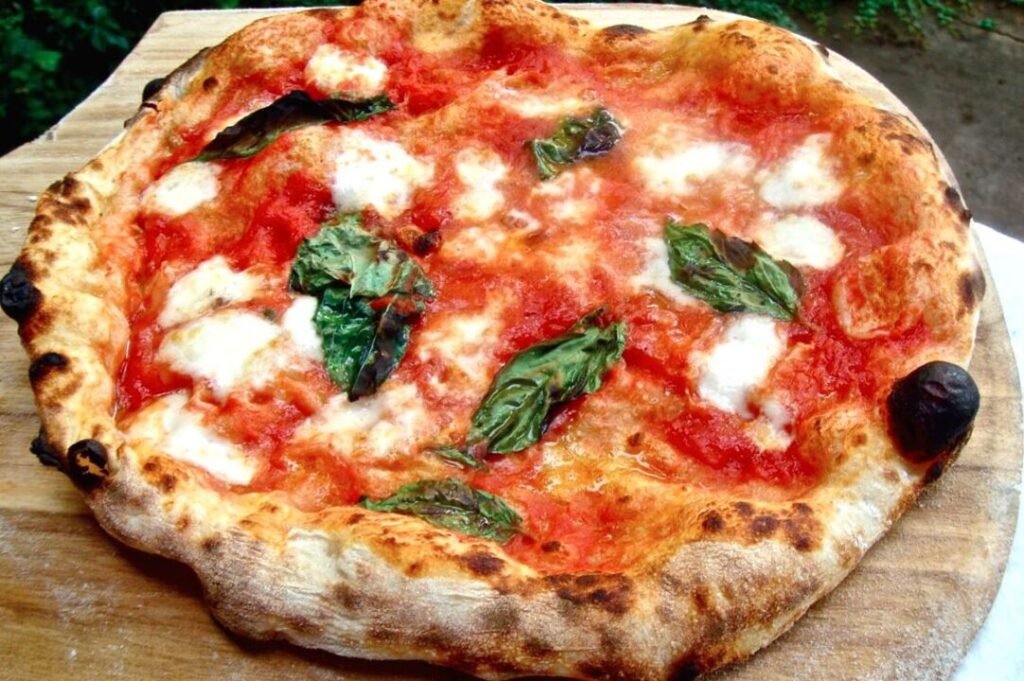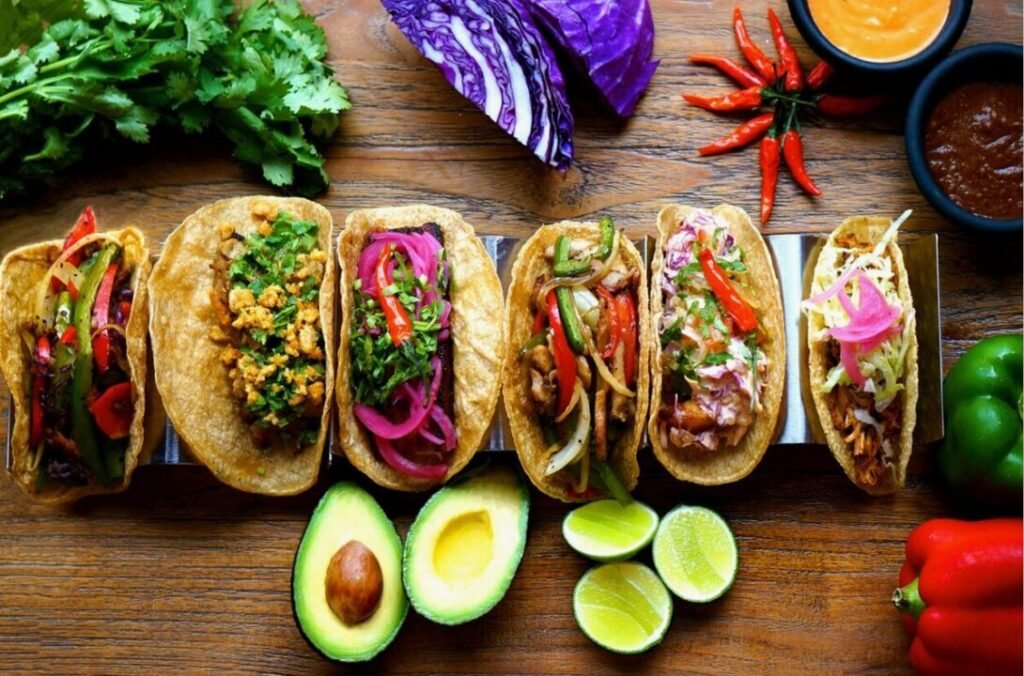Explore the birthplaces of well-known foods
From the humble beginnings of pasta in Italy to the exotic evolution of sushi in Japan, each dish holds a unique tale waiting to be revealed.
Tacos, curry, burgers, and more have rich histories that have shaped their flavors and cultural significance.
As you dig deeper into the origins of these beloved foods, you’ll gain a new appreciation for the diverse culinary landscapes that have influenced global cuisine.
The Birthplace of Pasta
Exploring the origins of pasta reveals a fascinating journey through the culinary history of Italy. Italian tradition plays an essential role in the creation of this beloved dish.
Dating back to ancient times, pasta has been a staple in Italian cuisine, with each region contributing its unique twist to the culinary evolution of this versatile food.
The roots of pasta can be traced to the Mediterranean region, where the Romans enjoyed a similar form of pasta known as ‘lagane.’
Over time, this simple dish evolved into the pasta we’re familiar with today, with various shapes and sauces becoming synonymous with Italian cuisine.
Italian tradition emphasizes the importance of using quality ingredients and mastering the art of pasta-making, resulting in dishes that are both comforting and flavorful.
As pasta spread beyond Italy, it became a global phenomenon, adapting to local tastes while still honoring its Italian roots. The culinary evolution of pasta continues to this day, with chefs around the world putting their unique spin on classic Italian dishes.
The Origins of Pizza
With origins dating back to ancient times, pizza has a rich history that intertwines with Italian culinary traditions.
The city of Naples, Italy, is widely regarded as the birthplace of modern pizza. Traditional Neapolitan pizza, known for its simplicity and high-quality ingredients such as San Marzano tomatoes and buffalo mozzarella, is a classic favorite.

This style features a thin, soft crust with slightly charred edges, topped with minimal but flavorful ingredients.
Over time, pizza has evolved into various styles, blending traditional methods with modern influences. While Neapolitan pizza remains a staple, other styles like New York, Chicago deep dish, and California pizza have gained popularity worldwide.
These variations offer a diverse range of crust thickness, toppings, and flavors, catering to different preferences.
Whether you prefer the authenticity of traditional Neapolitan pizza or the innovation of modern pizza styles, the origins of this beloved dish in Naples continue to influence pizza-making around the globe, showcasing the versatility and adaptability of this iconic Italian creation.
Sushi’s Surprising Beginnings
Sushi’s inception can be traced back to ancient Japan, where it originally served as a method of preserving fish through fermentation.
This ancient food custom eventually evolved into the delicious and varied sushi we enjoy today. Japanese culinary traditions played a significant role in shaping sushi into the beloved dish it’s now.
The art of making sushi was refined over centuries, with chefs experimenting with different ingredients and techniques to create the perfect bite.
Originally, sushi wasn’t meant to be the delicate, raw fish dish we’re familiar with today, but rather a way to preserve fish in fermented rice. This process not only preserved the fish but also enhanced its umami flavors.
As time passed, sushi became more refined, with chefs incorporating vinegared rice and fresh fish to create a delicacy that would become synonymous with Japanese cuisine.
Today, sushi has become a global phenomenon, with countless variations that still pay homage to its ancient roots in Japanese culinary traditions.
Tacos: A Historical Perspective
Tacos, originating in Mexico, boast a rich and diverse history that reflects the cultural tapestry of the region.

The roots of taco traditions can be traced back to indigenous Mexican civilizations, where edible vessels made of corn were used to wrap food. Historical ingredients like maize, beans, tomatoes, and chili peppers have been fundamental components of traditional tacos for centuries.
Taco-making techniques have evolved over time, influenced by Spanish colonization and the introduction of new ingredients like pork, beef, and cheese. The fusion of indigenous and European culinary practices gave rise to the wide variety of taco fillings and toppings enjoyed today.
Tacos have also adapted to regional preferences within Mexico and have spread globally, becoming a beloved street food and culinary phenomenon worldwide.
The versatility of tacos allows for endless creativity, making them a symbol of culinary freedom and innovation. From the simplicity of a classic street taco to gourmet fusion creations, the evolution of tacos continues to captivate food enthusiasts around the globe.
The Roots of Curry
Delving into the historical origins of curry reveals a complex tapestry of culinary influences and regional variations that have shaped this beloved dish into the diverse and flavorful staple it’s today.
The roots of curry can be traced back to the Indian subcontinent, where it has been a fundamental part of the cuisine for centuries. The use of aromatic spices like cumin, coriander, and turmeric, combined with techniques such as dry roasting and wet grinding, highlights the deep Indian influence in curry.
However, the story of curry doesn’t end in India. Through trade routes and colonial expansion, curry found its way to various parts of the world, leading to its global spread.
Different regions have put their own twist on curry, incorporating local ingredients and cooking methods, resulting in a wide array of curry dishes with unique flavors and characteristics.
Today, curry stands as a reflection of the interconnectedness of culinary traditions and the ability of food to transcend borders, bringing people together through shared flavors and a rich history of cultural exchange.
Bagels: Where It All Started
The journey from the aromatic spices of curry’s origins in the Indian subcontinent to the chewy delight of bagels, where it all began, reveals a fascinating tale of culinary evolution and cultural exchange.
Bagels, with their iconic round shape and a hole in the center, originated in Jewish communities in Poland during the 16th century.
These bread rings were boiled before baking, creating their distinctive chewy texture. Over time, bagels have evolved, leading to various bagel variations such as everything bagels, sesame bagels, and cinnamon-raisin bagels.
Bagels hold significant cultural importance, symbolizing the Jewish Sabbath and special occasions. Their round shape represents the cyclical nature of life and the yearning for perfection.
Traditional bagel baking techniques involved boiling the dough briefly before baking, a method that has been preserved through generations.
In modern times, bagels have been adapted to suit different tastes and preferences, with toppings and fillings ranging from classic cream cheese to smoked salmon.
The enduring popularity of bagels showcases how a humble bread ring can transcend borders and be embraced worldwide.
The Birth of Croissants
Originating in France during the early 19th century, the birth of croissants marks a pivotal moment in pastry history.
This iconic French pastry has a fascinating origin story that intertwines with the evolution of pastries. Legend has it that the croissant was inspired by the Austrian kipferl, a crescent-shaped baked good.

When Austrian bakers settled in France, they brought their techniques, leading to the creation of what we now know as the croissant.
The French pastry quickly gained popularity, becoming a staple in bakeries worldwide. Its flaky layers and buttery taste are a result of precise lamination techniques that have been perfected over generations.
The croissant’s journey from a humble pastry to a symbol of French culinary expertise showcases the continuous evolution of pastries.
Today, the croissant remains a beloved treat enjoyed by people of all ages.
Whether paired with a morning coffee or indulged in as a decadent snack, this delectable French pastry continues to hold a special place in the hearts of pastry enthusiasts around the globe.
The Evolution of Burgers
The pathway from the intricate layers of a croissant to the juicy layers of a burger reveals a compelling narrative of how culinary innovation can transcend borders and redefine taste experiences.
Burgers, once a humble sandwich, have undergone significant evolutionary changes and modern adaptations to become a beloved staple in the global food scene.
The evolution of burgers can be traced back to the late 19th century when they first appeared in the United States.
What started as a basic combination of ground beef patty and bread has evolved into a diverse range of options, incorporating various meats, vegetables, cheeses, and sauces.
The introduction of new ingredients and cooking techniques has led to the creation of gourmet burgers, sliders, veggie patties, and even plant-based alternatives.
In recent years, the focus on healthier eating has driven further evolutionary changes in the burger industry, with restaurants offering leaner protein options, gluten-free buns, and innovative salad burger bowls.
Despite these modern adaptations, the essence of a good burger – a delicious, handheld meal that satisfies cravings – remains at the core of its enduring popularity.
The History of Sushi Rolls
With a rich cultural heritage spanning centuries, explore the fascinating origins of sushi rolls and their journey to becoming a globally celebrated culinary delight.
Sushi, originating in Southeast Asia around the 8th century, was initially a way to preserve fish in fermented rice. Over time, sushi innovations and traditional techniques evolved, leading to the creation of sushi rolls as they’re recognized today.
The Edo period in Japan saw the popularization of nigiri sushi, a precursor to modern sushi trends. In the 19th century, Hanaya Yohei, a Tokyo-based chef, is credited with inventing the first sushi rolls, known as makizushi, using seaweed to hold the rice and fish together.
As sushi continued to evolve, it incorporated influences from different regions and cultures, giving rise to a myriad of sushi trends and modern influences.
Today, sushi rolls are enjoyed worldwide, with variations that cater to diverse palates and preferences. Whether you prefer traditional sushi techniques or innovative sushi creations, the history of sushi rolls is a tribute to the culinary artistry that transcends borders.
The Origins of Tiramisu

Amidst the rich tapestry of culinary history, lies the intriguing tale of how Tiramisu, a beloved Italian delicacy, emerged from the vibrant gastronomic landscape of Italy.
This delectable dessert has its roots in the northern Italian region of Veneto, specifically in the lively city of Treviso. Tiramisu, which translates to ‘pick me up’ in Italian, reflects the culinary evolution of Italy, blending flavors and textures harmoniously.
The origins of Tiramisu can be traced back to the 1960s, where it’s believed to have been created in a quaint restaurant in Treviso.
The dessert quickly gained popularity not only in Italy but also worldwide, becoming a staple in Italian cuisine.
The combination of rich mascarpone cheese, coffee-soaked ladyfingers, and a hint of cocoa powder creates a symphony of flavors that delights taste buds everywhere.
As Tiramisu continues to enchant dessert lovers globally, its humble beginnings in the heart of Italy stand as a tribute to the country’s culinary prowess and its ability to create enduring culinary masterpieces.
The Birthplace of Kimchi
Emerging from the culinary landscape of Korea, Kimchi, a traditional fermented dish, boasts a rich history intertwined with Korean culture and cuisine.
Kimchi fermentation not only enhances the flavor but also contributes to its health benefits, such as being rich in probiotics and vitamins.
Traditional recipes for kimchi often include ingredients like napa cabbage, radish, and a spicy seasoning paste made from ingredients like gochugaru (red chili powder), garlic, and ginger.
However, modern variations have emerged, catering to different tastes and dietary preferences, with options like vegan kimchi or fruit-infused versions gaining popularity.
Beyond its taste and health properties, kimchi holds significant cultural significance in Korea, often being present in various meals and celebrations. Its global popularity has surged in recent years, with people around the world embracing this flavorful and versatile dish.
Whether enjoyed as a side dish, in stews, or even as a topping on burgers and tacos, kimchi continues to captivate taste buds worldwide.
The Surprising History of Tempura
Originating in Japan, the surprising history of tempura reveals a culinary tradition that has captivated taste buds worldwide.
Tempura, a dish consisting of deep-fried seafood or vegetables in a light batter, traces its roots back to the 16th century when Portuguese missionaries introduced the technique of batter-frying to Japan.
This culinary exchange led to the birth of tempura, showcasing Japanese innovation by adapting foreign cooking methods into a unique dish that has become a staple in Japanese cuisine.
The word ‘tempura’ itself is believed to have originated from the Latin phrase ‘quattuor tempora’ meaning ‘Ember Days,’ which were the days of fasting in the Christian calendar when tempura was commonly consumed.
Over the centuries, tempura has evolved into a beloved delicacy enjoyed not only in Japan but also around the world. Its crispy texture and delicate flavors highlight the artistry and precision involved in Japanese culinary traditions.
Whether it’s shrimp, sweet potato, or eggplant, tempura continues to delight taste buds with its light and crispy perfection, a reflection of the enduring legacy of Japanese cuisine.
Dumplings: A Cultural Journey
Begin a flavorful cultural journey by delving into the diverse world of dumplings and their rich culinary heritage. Dumplings, found in various forms across the globe, have deep roots in culinary traditions shaped by a myriad of cultural influences.
In China, where dumplings are believed to have originated over 1,800 years ago, they symbolize wealth and prosperity due to their resemblance to ancient Chinese currency.
Chinese dumplings vary by region, with delicate dim sum from Cantonese cuisine contrasting with hearty jiaozi from Northern China.
Moving westward, Japanese gyoza reflect a blend of Chinese and Japanese flavors, emphasizing meticulous preparation and umami-rich fillings.
In Korea, mandu showcases a unique fusion of ingredients such as kimchi and tofu, highlighting the country’s culinary creativity.
Across Europe, pierogis in Poland and pelmeni in Russia demonstrate how dumplings have been adapted to suit local tastes while retaining their essence.
Whether steamed, boiled, or fried, dumplings continue to evolve, embodying a harmonious blend of culinary traditions and cultural influences.
The Origins of Churros
Churros, a delectable fried pastry, have a fascinating history that traces back to Spain. This Spanish delicacy is more than just a tasty treat – it’s a cultural icon with deep roots in Spanish cuisine.
Churros are made from a simple dough of flour, water, and salt, which is then piped into hot oil and fried to golden perfection. The crispy exterior gives way to a soft and fluffy interior, creating a delightful textural contrast that has captivated taste buds for centuries.
Originally enjoyed by Spanish shepherds in the mountains, churros eventually made their way to the bustling streets of Madrid, where they became a popular snack among locals and tourists alike.

Today, churros can be found in countries around the world, each putting its own unique spin on this beloved treat.
Whether dusted with cinnamon sugar, dipped in chocolate, or filled with sweet cream, churros continue to delight food lovers everywhere with their irresistible charm and delicious flavor.
Ice Cream’s Unexpected Birthplace
While churros have a rich history originating in Spain, ice cream’s unexpected birthplace may surprise you with its intriguing backstory.
Unlike many other popular frozen desserts, ice cream has its origins in ancient Persia. The Persians would combine snow from the mountaintops with fruit juices to create a invigorating treat.
This innovation eventually made its way to ancient Greece and Rome, where they added honey and nectar to enhance the flavor.
The evolution of frozen desserts continued through the centuries, with the Chinese inventing a method of mixing milk and rice to create an early version of what we now know as ice cream.
However, it wasn’t until the 16th century that gelato, a precursor to modern ice cream, was developed in Italy. Gelato’s smoother texture and intense flavors quickly gained popularity throughout Europe.
Today, ice cream is enjoyed worldwide in countless flavors and variations, thanks to its fascinating journey from ancient Persia to becoming a beloved dessert for people of all ages.
Finally
So next time you savor a plate of pasta, a slice of pizza, or a delicious sushi roll, recall the fascinating origins behind these popular foods.
From the ancient civilizations of Mexico to the aromatic spices of India, each dish carries a rich cultural heritage that has shaped its unique flavors and textures.
The evolution of these foods reflects the diverse culinary traditions that have been passed down through generations, creating a global tapestry of flavors for us to savor.
Enjoy exploring the world through its delicious creations!

